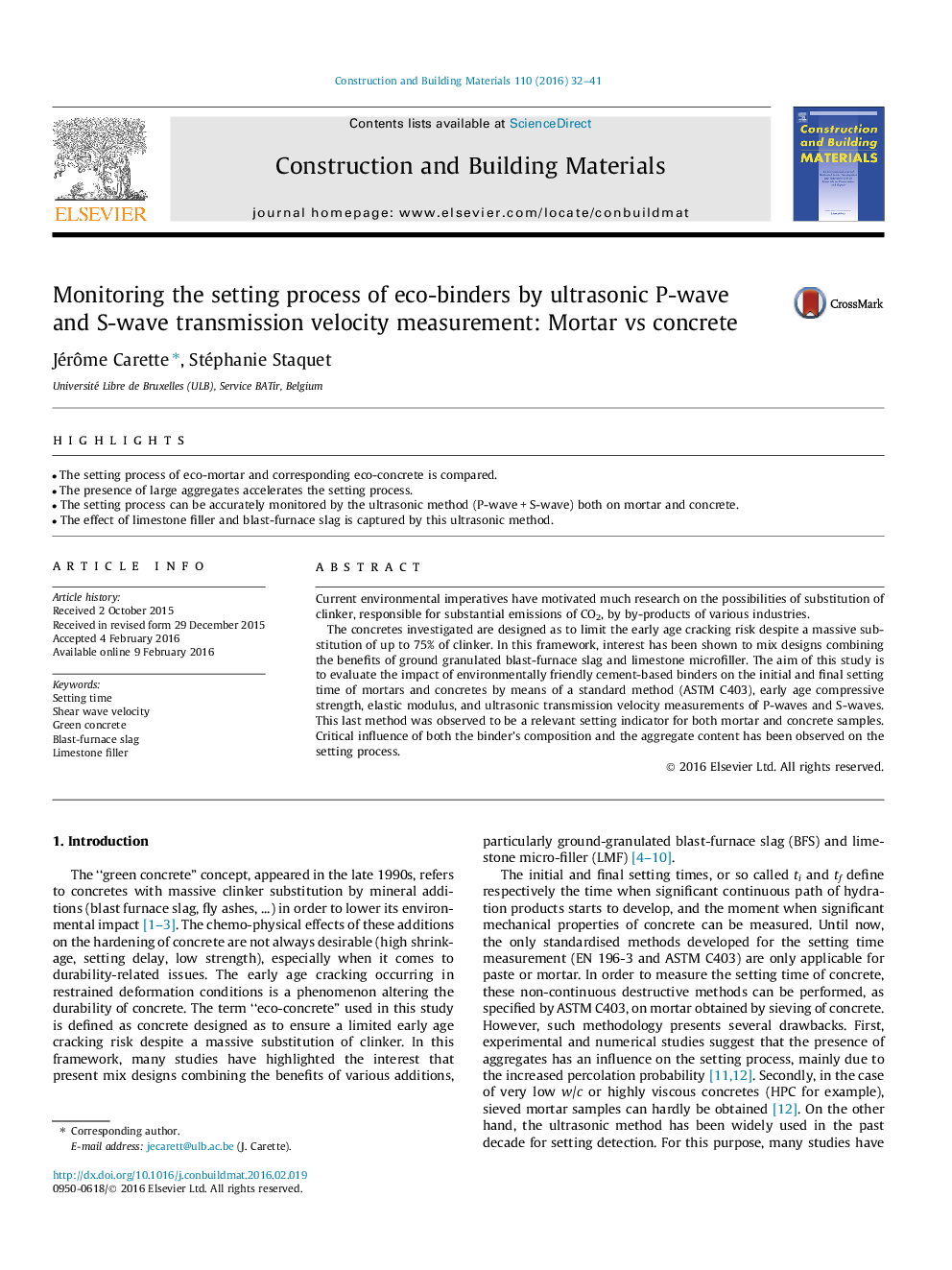| Article ID | Journal | Published Year | Pages | File Type |
|---|---|---|---|---|
| 256056 | Construction and Building Materials | 2016 | 10 Pages |
•The setting process of eco-mortar and corresponding eco-concrete is compared.•The presence of large aggregates accelerates the setting process.•The setting process can be accurately monitored by the ultrasonic method (P-wave + S-wave) both on mortar and concrete.•The effect of limestone filler and blast-furnace slag is captured by this ultrasonic method.
Current environmental imperatives have motivated much research on the possibilities of substitution of clinker, responsible for substantial emissions of CO2, by by-products of various industries.The concretes investigated are designed as to limit the early age cracking risk despite a massive substitution of up to 75% of clinker. In this framework, interest has been shown to mix designs combining the benefits of ground granulated blast-furnace slag and limestone microfiller. The aim of this study is to evaluate the impact of environmentally friendly cement-based binders on the initial and final setting time of mortars and concretes by means of a standard method (ASTM C403), early age compressive strength, elastic modulus, and ultrasonic transmission velocity measurements of P-waves and S-waves. This last method was observed to be a relevant setting indicator for both mortar and concrete samples. Critical influence of both the binder’s composition and the aggregate content has been observed on the setting process.
